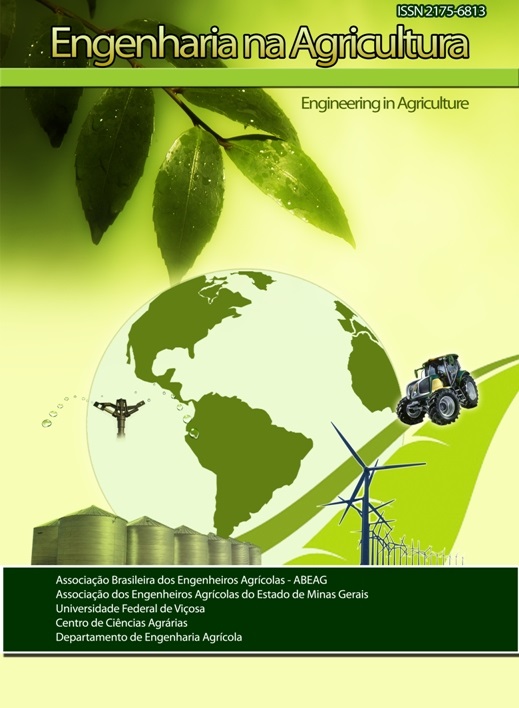CONTROL OF MAIZE WEEVIL WITH APPLICATION OF DIATOMACEOUS EARTH IN CORN GRAINS STORED IN DIVERSE TEMPERATURES
DOI:
https://doi.org/10.13083/reveng.v27i5.948Keywords:
storage, damage, pest insects, inert dust, Sitophilus zeamaisAbstract
The insect known as maize weevil (Sitophilus zeamais) is one of the most important pests of stored corn in Brazil. Among the various forms of control, one can highlight the use of inert powders, which has advantages of not providing risk to the environment or to human and animal health, besides not having reports of insect resistance. Thus, this work evaluated the effect of different doses of diatomaceous earth on the development of Sitophilus zeamais on two temperature conditions on corn grain storage. A completely randomized design was adopted in a factorial 4x2x4 (diatomaceous earth dose x storage temperature x storage time) dosage, with three replicates. The diatomaceous earth doses were: 0, 250, 500 and 1000 g t-1 and subsequently stored at temperatures of 22 and 30°C for 90 days. The bulk density decreased during the storage for all diatomaceous earth doses applied, but in inverse proportion to the dose increment. Diatomaceous earth has proven better efficiency in the control of S. zeamais, with increase in dose and storage temperature. Dry weight decrease was observed in all doses and storage temperatures evaluated, but it was more pronounced in those grains that have not received the application of diatomaceous earth.
Downloads
Downloads
Published
How to Cite
Issue
Section
License
Authors who publish with this journal agree to the following terms:
The author(s) authorize(s) the publication of the text in the journal;
The author(s) ensure(s) that the contribution is original and unpublished and that it is not in the process of evaluation by another journal;
The journal is not responsible for the views, ideas and concepts presented in articles, and these are the sole responsibility of the author(s);
The publishers reserve the right to make textual adjustments and adapt texts to meet with publication standards.
From submission, the author is fully conceding the paper's patrimonial rights to the publication, but retaining the owner of its moral rights (authorship and paper's identification) according to Creative Commons Attribution-Noncommercial.








 Licensed by
Licensed by 